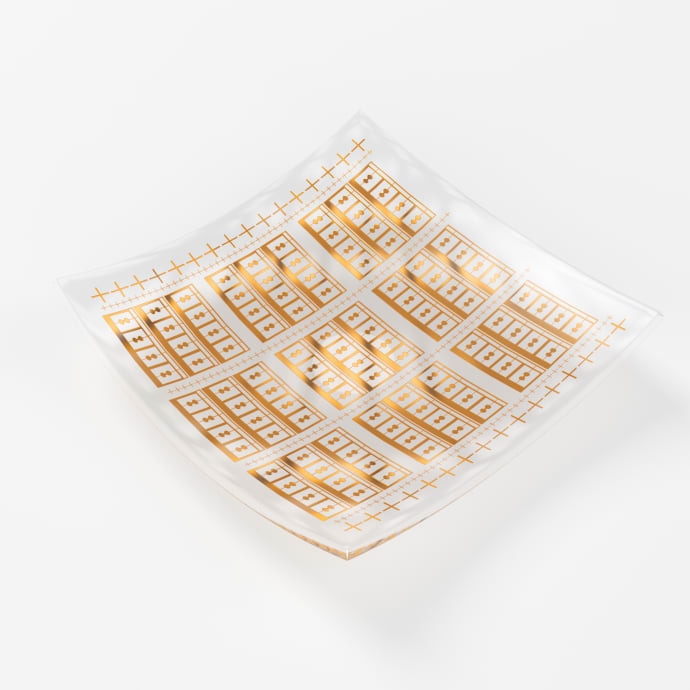Nov 1 2017
Scientists from the Chalmers University of Technology have developed a flexible detector that can be used in teraHertz frequencies, or at frequencies of 1000 GHz. They achieved this by using graphene transistors on plastic substrates.
This unique and novel detector has the ability to advance the use of teraHertz technology to applications that mandate flexible electronics, for example, wearable technology and wireless sensor networks. The outcomes of the study have been reported in Applied Physics Letters, a scientific journal.
 With the help of the two-dimensional material graphene, the first flexible terahertz detector has been developed by researchers at Chalmers. CREDIT: Boid—Product Design Studio, Gothenburg/Chalmers University of Technology.
With the help of the two-dimensional material graphene, the first flexible terahertz detector has been developed by researchers at Chalmers. CREDIT: Boid—Product Design Studio, Gothenburg/Chalmers University of Technology.
TeraHertz radiation has a broad array of applications and can be applied for any field such as radio astronomy to medicine. The term is refers to the electromagnetic waves that have frequencies between 100 GHz and 10 THz. The requirement of larger bandwidth in wireless communications as well as for security applications has initiated extensive research on components and systems to be used at teraHertz frequencies.
For many years, a major difficulty has been to allow lightweight and low-cost applications. Yet, progresses in polymer technology have advanced the manufacture of flexible electronics and allowed the making of high-frequency units on flexible substrates.
At present, Chalmers scientists Xinxin Yang, Andrei Vorobiev, Andrey Generalov, Michael A. Andersson, and Jan Stake have designed the first mechanically flexible and graphene-based teraHertz detector, thereby opening the door for flexible teraHertz electronics.
The detector has distinctive properties. It has the ability to detect signals in the frequency range of 330-500 GHz at ambient temperature. It is flexible, translucent, and can be used in a range of applications. The method can be applied for imaging in the teraHertz range—that is, THz camera—and also for discovering different substances—that is, sensors. It can also be prospectively advantageous in the field of health care, as teraHertz waves can be applied for detecting cancer. The detector can also be used in wireless communications and vehicle imaging sensors.
The distinctive electronic properties of graphene, in combination with its flexible characteristic, render it to be a propitious material for integration into fabric and plastic—significant building blocks in a future interconnected world. Apart from other applications, Graphene electronics allows innovative applications for day-to-day objects, which are usually referred to as the Internet of Things.
The detector demonstrates the distinct possibilities of using graphene—as a material that conducts electricity excellently, this could make graphene an important building block in fast electronics. Hence, the study by the Chalmers scientists is a significant step towards the application of graphene in the teraHertz range, and as an advancement for high-performance and inexpensive flexible teraHertz technology.
Recently, the detector was received well at the EU Tallinn Digital Summit in which various significant technological advancements made possible by graphene and related materials were exhibited. During the summit, EU Heads of State and Government came together to debate about digital advancement as well as digital future of Europe. The focal point of the summit was to demonstrate the role that can be played by graphene.
The study is also part of a licentiate seminar of Xinxin Yang, to be presented at Chalmers on November 22, 2017.
The EU Graphene Flagship, the Swedish Foundation for Strategic Research (SSF), and the Knut and Alice Wallenberg Foundation (KAW) have funded the study.